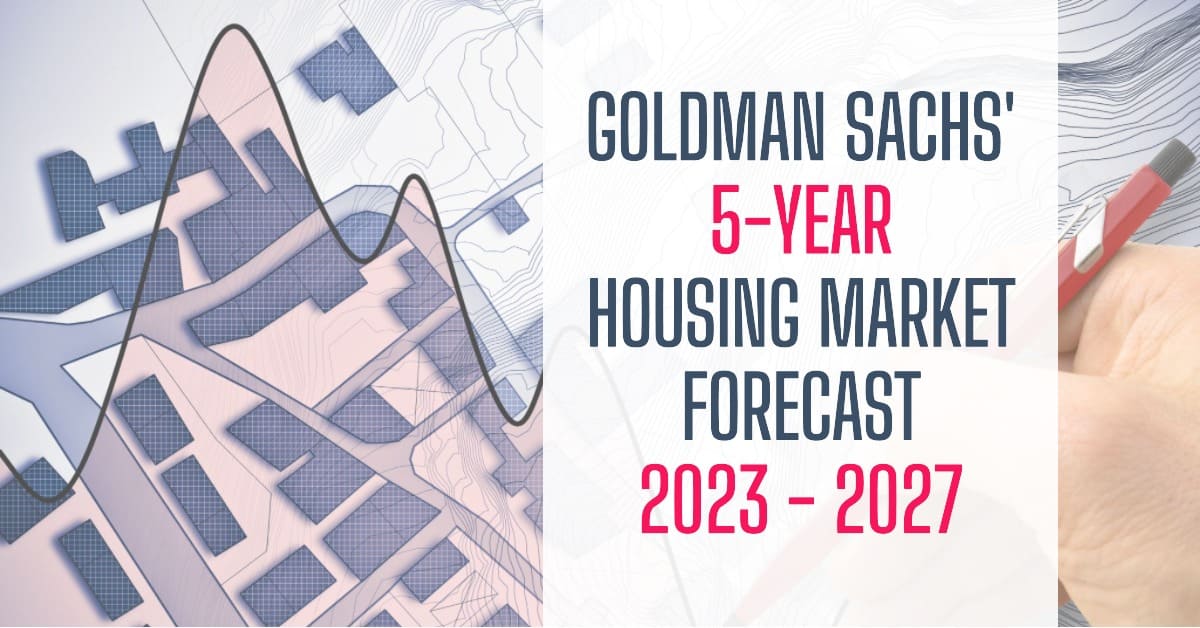Goldman Sachs, a leading global investment bank, has released its latest 5-year housing market forecasts for the United States, offering valuable insights into the trajectory of home prices and market dynamics from 2023 to 2027. The forecast offers a positive outlook for the U.S. real estate landscape. Despite the challenges faced in recent years, the market is poised for growth, with steady increases in home prices, new home sales, and existing home sales anticipated in the coming years.
Overview of Goldman Sachs' Predictions
Goldman Sachs anticipates a modest growth in home prices for the year 2024, with an estimated increase of 0.6%. However, the subsequent years, particularly 2025 and 2026, are expected to witness a more robust rebound, with home prices projected to grow by 3.8% and 4.9% respectively. This positive outlook signifies a recovery from the challenges faced by the U.S. housing market in recent times.
Factors Influencing Home Price Trends
The U.S. housing market experienced a two-year boom during the pandemic, driven by relatively low mortgage rates that fueled demand amid insufficient inventory. However, a correction ensued in 2022 as mortgage rates increased following the Federal Reserve's efforts to combat rising inflation. Despite this correction, home prices are projected to rebound, attributed to a persistent imbalance between demand and supply.
Market Dynamics and Trends
In 2023, preliminary data indicates a 3.5% growth in U.S. home prices. Notably, this growth is expected to slow down in 2024, making it the year with the slowest estimated growth between 2023 and 2026. The correction in 2022 did impact the market, but it was milder compared to the 2008 Great Recession, showcasing the resilience of the current housing market.
New Home Sales Projection
Goldman Sachs predicts a progressive increase in the number of new homes available for sale in the coming years. Starting from 680,000 in 2023, new home sales are projected to reach 723,000 in 2024, 771,000 in 2025, and 781,000 in 2026. This upward trend signifies a positive shift in housing market dynamics.
Existing Home Sales Outlook
While existing home sales are expected to dip in 2024 to 3,834,000, they are forecasted to rebound in 2025, reaching 4.240 million. Subsequent years, 2026 and 2027, are projected to see further increases to 4.369 million and 5.001 million respectively. These estimates reflect a gradual recovery from the temporary setback in 2022.
Housing Starts and Residential Fixed Investment
Goldman Sachs provides insights into housing starts, with a preliminary estimate of 1.390 million for 2023. Over the next four years, the bank expects a gradual increase, reaching 1.535 million in 2027. Additionally, the forecast for residential fixed investment shows a recovery, with an expected -11.3% in 2023 turning into positive growth in the subsequent years, culminating in a 2.4% increase in 2027.
Goldman Sachs housing forecast 👇 pic.twitter.com/MS49AbLuPF
— Lance Lambert (@NewsLambert) December 13, 2023
Is the Housing Market Crash Inevitable?
Will the housing market crash? Goldman Sachs' latest housing forecasts present a cautiously optimistic outlook, predicting a rebound in home prices and indicating positive trends in new home sales, existing home sales, and housing starts.
Factors such as historically low mortgage rates, an inventory imbalance, and the gradual nature of recent corrections contribute to the market's ability to withstand potential crashes.
While Goldman Sachs' projections offer reassurance, stakeholders are advised to approach the forecast with caution, considering the influence of external factors on market dynamics. The U.S. housing market's current trajectory suggests stability, but vigilance is crucial, as unforeseen circumstances or global events could impact the market.
Overall, the analysis indicates that, at present, the U.S. housing market is not on a crash trajectory, emphasizing the importance of staying informed and responsive to emerging trends and potential challenges. Investors, homeowners, and industry professionals can use this forecast to make informed decisions in navigating the dynamic and resilient U.S. housing market.




